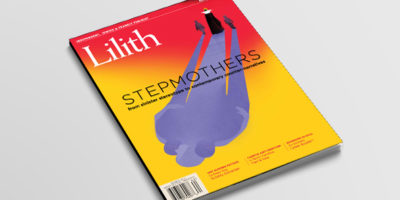Transference and the Female Rabbi
The first generation of female rabbis all nod in recognition at the question “What do you call a female rabbi?” In Hebrew, a language that distinguishes gender, that question indicated a functional problem. In English, a language that knows no gender, calling a female rabbi by the title “rabbi” would seem to be the obvious answer. And yet native English speakers did not find that answer obvious. In their unconscious minds, rabbis were men, even when an actual female rabbi stood before them. When Rabbi Sally Priesand was ordained [in 1972], the newspapers dubbed her “Rabbi Sally.” Perhaps saying Rabbi Priesand felt too formal and not sufficiently intimate for addressing a woman.
Some attitudes toward women rabbis reflect the long tradition of male rabbis and have become embedded in people’s psyches. “You don’t look like a rabbi” is a common refrain from people whose rabbis never were old men with beards but who have internalized that archetype. While the age of the rabbi plays a role here, one has to assume that this reaction has more to do with gender than with age. After all, these mythic old rabbis with beards presumably were young once. And what is the subliminal message of a Reform congregation’s decorating its walls with paintings of dancing Chasidic men? What people see right in front of them cannot always overcome the images enshrined in their unconscious, particularly when those images continue to be reinforced. At the bat mitzvah of the young girl who asked to wear matching dresses with the rabbi, two women were overheard talking afterward in the women’s bathroom: “It was a lovely bat mitzvah,” they said, “but who was that other girl up on the pulpit?”
There are other influences at play when it comes to how people relate to women rabbis. As people get to know an individual female rabbi, for example, they might adjust their transference in response to her personality and style. They no longer say, “I’ve never kissed such a pretty rabbi before,” when they are talking about the rabbi they know and love. If the rabbi is particularly nurturing, people will respond in whatever way they usually respond to a nurturing personality.
Culture and history also have bearing on how people relate to women rabbis. Some congregations in those early days hired women rabbis to run schools on the cultural assumption, often mistaken, that all women know something about education. A culture in which many women are teachers may be more likely to accept a woman rabbi in the role of teacher. A culture in which women are paid seventy cents on the dollar will likely pay its female rabbi less than a male rabbi. While this can be a deliberate action (years ago, one male senior rabbi was heard to ask a colleague, “How much do you pay your female rabbi?”), it is usually a more complicated mix of cultural assumptions and unconscious fantasy (e.g., does paying a female rabbi feel like paying your mother to love you?). Women rabbis, in turn, who have been raised within that same culture, fear that being a tough negotiator might have negative impact on their relationship with the congregation. They just might not be wrong.
Unconscious attitudes do not change in a generation or even two. The question “What do you call a woman rabbi?” has been answered. The question of whether people will ever relate the same way to a woman rabbi as to a male rabbi remains one for the ages.
From The Sacred Calling: Four Decades of Women in the Rabbinate, edited by Rabbi Rebecca Einstein Schorr and Rabbi Alyssa Mendelson Graf with Rabbi Renee Edelman (CCAR Press, $21.95). Used with permission.



